Botanical Name: Anemone blanda
Common Name: windflower, winter windflower
Family: Ranunculaceae
Distribution/Origin: South Eastern Europe, Cyprus, western Turkey, Caucasus
Leaf: deeply cut, fern like, compound, oblong with dentate-serrated margins, cuneate bases, soft green color
Bud: basal
Flower: solitary, daisy like, 9-14 petal like sepals, apetalous, purple-blue, perfect, March-April blooming
Fruit/Seed: achene
Stem/Bark: tubers
Size: 4-8” height, >1’ spread
Habit: spreading, creeping
Form: mat like
Soil conditions: organically rich, well drained
Moisture: moderate
Sun: full sun to partial shade
Exposure: in particularly hot climates, plants enjoy some shade from afternoon sun, sheltered from high winds (despite misleading name)
Landscape use: rock garden, alpine garden, mix and mass plantings, woodland margin, naturalized areas, ground cover, perennial border
Notes: plants go dormant after flowering, susceptible to leaf spot and rhizome rot

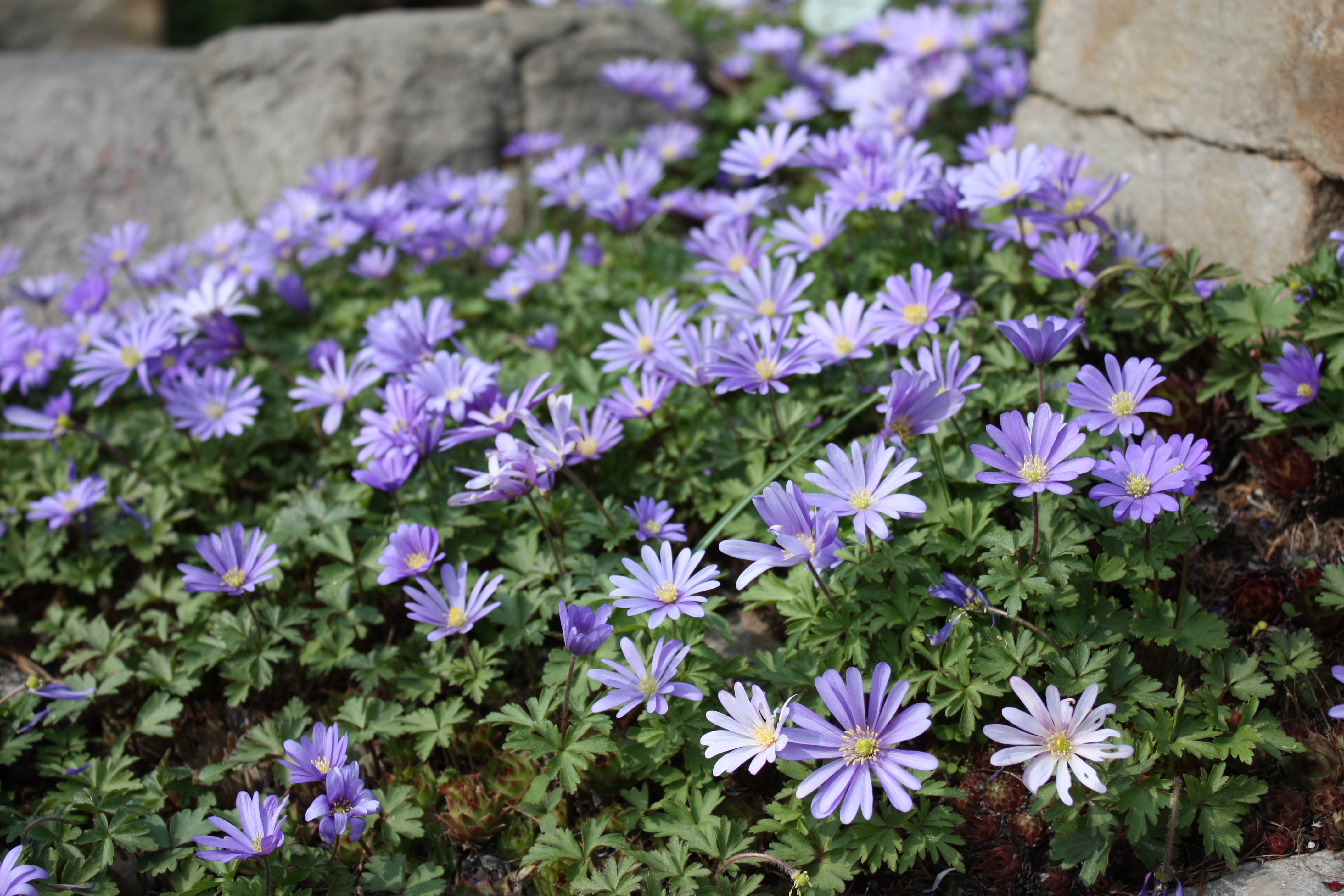
Botanical Name: Chionodoxa luciliae
Common Name: glory of the snow
Family: Asparagaceae
Distribution/Origin: western Turkey
Leaf: narrow, elliptic-linear
Bud: basal
Flower: loose raceme of 2-3 upward facing blooms, 6 petaled, blue to violet, small white centers
Fruit/Seed: capsule
Stem/Bark: bulbs
Size: .50’ height by .50’ spread
Habit: spreading
Form: tufted
Soil conditions: average, well drained
Moisture: medium
Sun: full sun to partial shade
Exposure:
Landscape use: massed, mixed borders, naturalized areas, rock gardens, woodland areas, slopes or lawns under large deciduous trees
Notes: goes into dormancy after blooming early spring

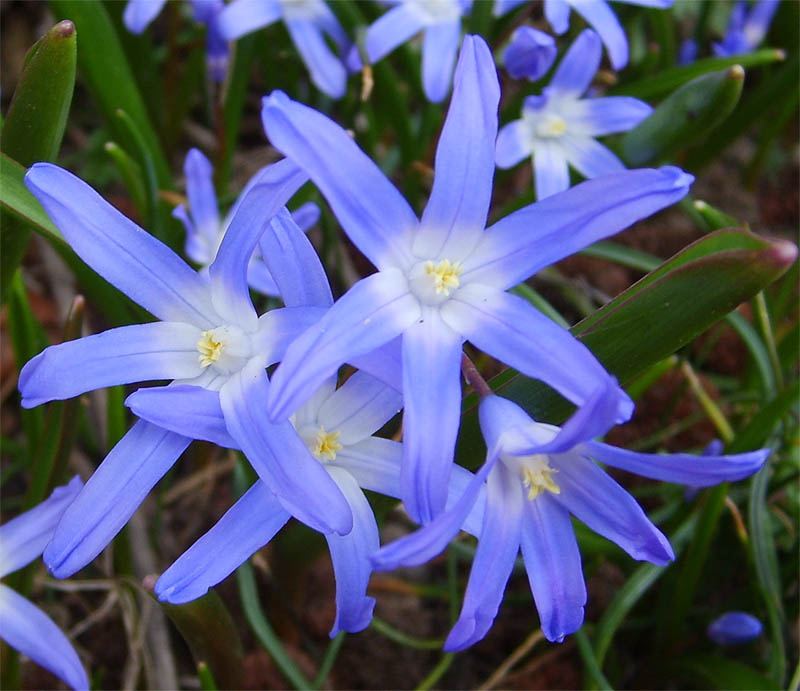
Botanical Name: Chrysosplenium davidianum
Common Name: golden saxifrage
Family: Saxifragaceae
Distribution/Origin: eastern Asia
Leaf: rounded, palmately veined with lobed margins, base broadly cunate with acute apex, hairy
Bud: basal
Flower: yellow cyme, multi blooms, bract leaves with petiole
Fruit/Seed: capsule with dark brown ovoid seeds
Stem/Bark: rhizomatous
Size: 6-12” height, 18-24” spread
Habit: spreading, low growing
Form: mat like
Soil conditions: average, well drained
Moisture: consistently moist
Sun: partial shade to full shade
Exposure:
Landscape use: understory planting, ground cover, naturalized areas, woodland margin
Notes:


Botanical Name: Epimedium pinnatum subsp. colchicum
Common Name: Bishop's hat, horny goat weed, barrenwort
Family: Berberidaceae
Distribution/Origin: Armenia, Iran, Turkey
Leaf: compound leaves with ovate sparsely toothed to entire leaflets, red to white hairs on surface, acute tips with cordate bases
Bud: basal
Flower: outward facing yellow flowers with yellow to brown spurs
Fruit/Seed: insignificant
Stem/Bark: thin upright stems
Size: 1-1.5’ height, 1-1.5’ spread
Habit: spreading mounds
Form: dense clumps
Soil conditions: average, well drained, loose organically rich loams
Moisture: dry to medium
Sun: part shade to full sun
Exposure: tolerant of drought (once established), deer, rabbits, heavy shady, erosion
Landscape use: ground cover, shady edge, mass in woodland gardens, wild gardens, naturalized areas, partially shaded rock gardens, border fronts, paths/walkways
Notes:


Botanical Name: Hyacinthus orientalis
Common Name: common hyacinth, garden hyacinth
Family: Asparagaceae
Distribution/Origin: SW Asia, central Turkey, Syria, Lebanon, northern Israel
Leaf: strap like leaves, soft texture, deep bright green
Bud: basal whorl
Flower: raceme, 2-50 fragrant purple flowers, tubular 6 lobed perianth, recurved
Fruit/Seed: loculicidal capsules
Stem/Bark: bulbs, upright green flower stems
Size: up to 1’ height by 0.5’ spread
Habit: upright
Form: small clumps
Soil conditions: organically rich, well drained
Moisture: consistent moisture
Sun: full sun to partial shade
Exposure:
Landscape use: containers, perennial borders, group or mass plantings, rock gardens, along walkways/pathways, spring bulb beds
Notes: slow down on watering once plants begin to go into dormancy. Bulbs may need to be replaced every couple years as flowering quality decreases.
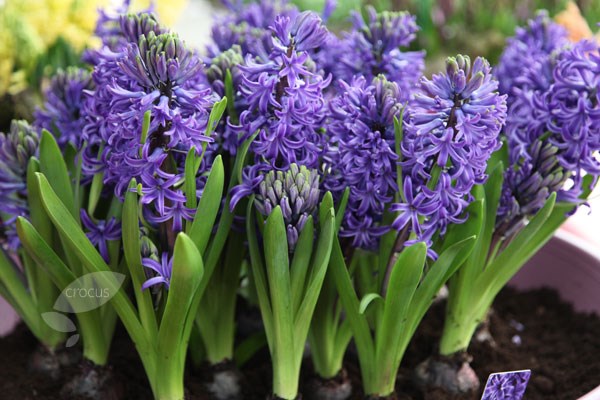
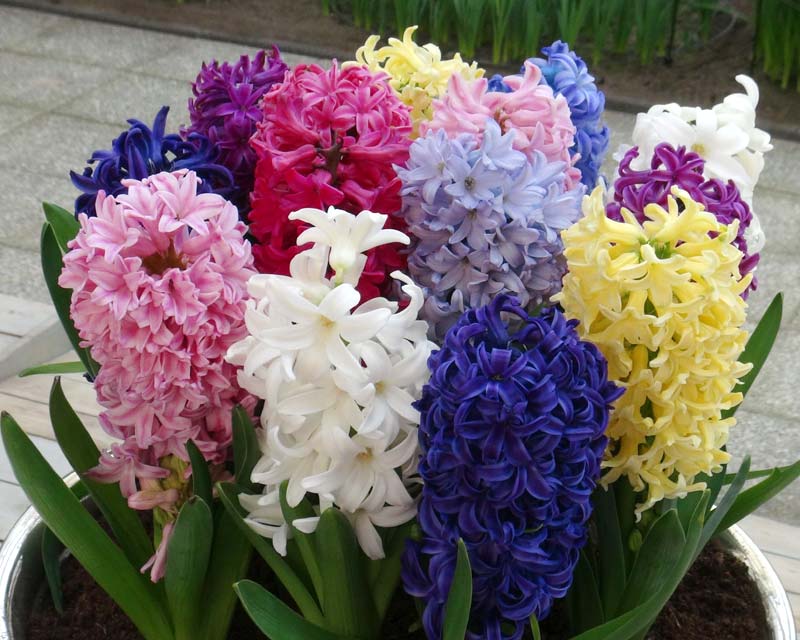
Botanical Name: Iberis sempervirens
Common Name: candytuft, perennial candytuft
Family: Brassicaceae
Distribution/Origin: southern Europe
Leaf: simple, lustrous surfaces, dark green, linear-oblong shape with obtuse bases and apices, entire margins
Bud: spiraled
Flower: flattened blooms, 4 petaled, corymb like racemes, perfect, showy white, fragrant, blooms April-June
Fruit/Seed: silicle
Stem/Bark: stems are sometimes stoloniferous
Size: 6-12” height, 1-3’ spread
Habit: spreading
Form: mounded, groundcover
Soil conditions: average, well drained
Moisture: dry to medium
Sun: full sun
Exposure: drought tolerant once established
Landscape use: beds and borders, groundcover, rock garden
Notes:


Botanical Name: Magnolia sprengeri ‘Eric Savill'
Common Name: Eric Savill magnolia
Family: Magnoliaceae
Distribution/Origin: garden origin, China
Leaf: oblanceolate or narrowly ovate to broad ovate, densely villose on midrib
Bud: downy buds “mouse coats”, grey, terminal
Flower: erect, produced before leaves on glabrous peduncles, tepals usually in 12, pink or white with purple bases
Fruit/Seed: slender fruit cones
Stem/Bark: light grey, peeling on older branches and trunk, young shoots glabrous, yellow
Size: 20-40’ height, 10-25’ spread
Habit: open
Form: vase
Soil conditions: well drained, humus rich
Moisture: moist
Sun: full sun to partial shade
Exposure: shelter from cold winds
Landscape use: flower borders and beds, city and courtyard gardens, cottage and informal garden
Notes:


Botanical Name: Mukdenia rossii
Common Name: crimson fan
Family: Saxifragaceae
Distribution/Origin: SE Asia, Japan, China
Leaf: palmate, rounded, 5-9 lobed, dentate, medium green, bronze tinge in summer
Bud: basal
Flower: branched panicles, white blooms, campanulate shape
Fruit/Seed: carpels
Stem/Bark: creeping rhizomes
Size: up to 1.5’ height, 1-2’ spread
Habit: spreading
Form: mounded
Soil conditions: fertile, well drained
Moisture: moist
Sun: part shade
Exposure: will tolerate full sun in northern hemisphere, appreciates afternoon shade in hot and humid climates
Landscape use: ground cover, naturalize, understory planting, attractive foliage, woodland gardens, shade gardens, borders
Notes:


Botanical Name: Muscari latifolium
Common Name: grape hyacinth
Family: Asparagaceae
Distribution/Origin: southern and western Asia
Leaf: basal leaf, linear, strap shaped, medium green, entire margins
Bud: basal
Flower: bicolor conical raceme, lower fertile flowers dark violet, upper sterile blooms light blue, tightly packed, urncolate
Fruit/Seed: brown capsule
Stem/Bark: bulbs, erect green stems
Size: up to 1’ height, spreads less than 1’
Habit: vertical, upright
Form: clumping, oval
Soil conditions: average, well drained
Moisture: even moisture
Sun: full sun to partial shade
Exposure:
Landscape use: drift plantings, understory for shrubs and trees, rock gardens, borders, containers, mixed with other bulb plantings, easily forced for winter bloom
Notes: keep ground moist during spring and reduce watering as season progresses


Botanical Name: Narcissus ‘Ice Follies’
Common Name: ice follies daffodil
Family: Amaryllidaceae
Distribution/Origin: garden origin
Leaf: grass like, parallel venation, filiform shape, entire margins
Bud: basal
Flower: large blooms, floriferous, pale yellowish white petals, orange to yellow corolla, 6 petals, solitary, perfect, blooms April-May
Fruit/Seed: capsule
Stem/Bark: green stems, bulbs
Size: up to 1.5’ height, less than 1’ spread
Habit: upright, sprawling
Form: vase, clumps
Soil conditions: organically rich, sandy loams, well drained
Moisture: medium
Sun: full sun to part shade
Exposure:
Landscape use: drifts, underplanting for shrubs and trees, containers, beds, borders
Notes:


Botanical Name: Narcissus ‘Jetfire’
Common Name: jetfire daffodil
Family: Amaryllidaceae
Distribution/Origin: garden origin
Leaf: elliptic-linear, medium green, grass like
Bud: basal
Flower: reflexed yellow petals, red to orange corona,
Fruit/Seed: capsule
Stem/Bark: erect green stems, bulbs
Size: 6-12” height, 3-6” spacing
Habit: upright, spreading
Form: clumping
Soil conditions: average, well drained
Moisture: even moisture
Sun: full sun to part shade
Exposure:
Landscape use: alpine, cut flower garden, underplanting, drifts, beds, borders
Notes: flowers slightly earlier than other daffodils

Botanical Name: Narcissus ‘Tête-à-tête’
Common Name: miniature daffodil, ‘Tête-à-tête’ daffodil
Family: Amaryllidaceae
Distribution/Origin: garden origin
Leaf: strap like, linear-elliptic, medium green
Bud: basal
Flower: pale yellow, slightly darker yellow corona, 5 petaled, slightly reflexed
Fruit/Seed: capsule
Stem/Bark: erect green stems, bulbs
Size: less than 1’ height, less than 1’ spread
Habit: upright, miniature
Form: small clumps
Soil conditions: average, well drained
Moisture: medium
Sun: full sun to partial shade
Exposure:
Landscape use: rock gardens, container planting, border fronts, underplanting for shrubs and trees, window boxes
Notes: miniature daffodil

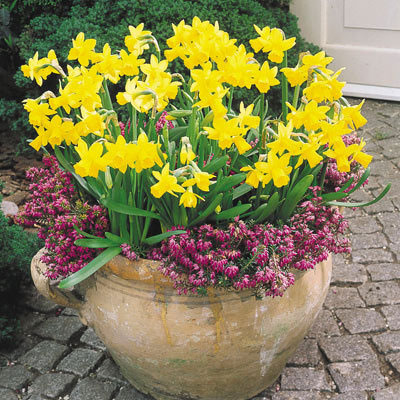
Botanical Name: Narcissus bulbocodium
Common Name: hoop petticoat daffodil, golden bells daffodil
Family: Amaryllidaceae
Distribution/Origin: Europe, garden origin
Leaf: simple, parallel venation, linear, entire margins, semi-cylindrical
Bud: basal
Flower: tubular, perfect, solitary, yellow, corona and narrow pointed perianth segments, blooms March-April
Fruit/Seed: green to brown capsule, May-June
Stem/Bark: green stems, bulb
Size: .5’ height, up to 1’ spread
Habit: miniature, spreading, upright
Form: clumping
Soil conditions: average, well drained
Moisture: medium
Sun: full sun to partial shade
Exposure:
Landscape use: containers, alpine/rock gardens, drifts, perennial border, spring interest
Notes:


Botanical Name: Narcissus poeticus hybrids
Common Name: poets daffodil, pheasants eye, poets narcissus
Family: Amaryllidaceae
Distribution/Origin: garden origin, naturalized in Europe and North America
Leaf: strap like, linear to elliptical, green, parallel venation, entire margins
Bud: basal
Flower: ring of petals pure white, short corona of light yellow with red edge, recurved petals
Fruit/Seed: capsule
Stem/Bark: erect green stems, bulb
Size: up to 15” height,
Habit: upright, erect
Form: clumping
Soil conditions: average, well drained
Moisture: medium
Sun: full sun to part shade
Exposure: more tolerant than other daffodils of wet soils
Landscape use: specimen, drift plantings, mixed bulb beds, borders
Notes: one of the first daffodils to be cultivated


Botanical Name: Prunus incisa
Common Name: Fuji cherry
Family: Rosaceae
Distribution/Origin: Japan, China
Leaf: green, incised margins, lanceolate to elliptic, smooth texture, cuneate to rounded bases
Bud: alternate, zig zagging shoots
Flower: pendulous corymbs, light pink to white with red calyx, slightly ruffled petals, airy looking flowers, blooms March-April
Fruit/Seed: black to red glossy drupes, small
Stem/Bark: smooth, sandy grey to brown, tiny hints of orange, lenticel markings
Size: 10-20’ height, 10-20’ spread
Habit: upright, erect, crooked branching, suckering
Form: oval, rounded
Soil conditions: fertile, well drained
Moisture: average, do not overwater
Sun: full sun to partial shade
Exposure:
Landscape use: ornamental, specimen, woodland margin, spring interest
Notes: used in creating dwarf cherry cultivars

Botanical Name: Prunus sargentii
Common Name: Sargent cherry
Family: Rosaceae
Distribution/Origin: Japan, Korea, Russia
Leaf: elliptic to oblong, glossy dark green, acuminate tips, serrated margins, bronze tint when first emerging
Bud: alternate
Flower: sessile umbels, 2-4 clusters flowered clusters,
Fruit/Seed: glossy dark purple black drupes
Stem/Bark: shiny, reddish brown
Size: 20-30’ height, 20-30’ spread
Habit: dense, spreading branches
Form: broadly rounded crown
Soil conditions: average, well drained
Moisture: medium
Sun: full sun to part shade
Exposure: somewhat intolerant of high heat and humidity
Landscape use: lawns, street trees, spring interest, specimen or group plantings, small shade tree
Notes:

Botanical Name: Prunus subhirtella ‘Whitcomb’
Common Name: whitcomb flowering higan cherry
Family: Rosaceae
Distribution/Origin: Asia, Japan
Leaf: simple, narrow drip tip, oblong-ovate, finely serrated, glossy
Bud: alternate
Flower: long petioles, dark pink buds, single to double, simple, pink fading later to white, notched petals, blooms October to March
Fruit/Seed: small black drupe
Stem/Bark: lenticels present, brown to grey
Size: 20-30’ height, 15-25’ spread
Habit: spreading
Form: broad, widely oval
Soil conditions: fertile loams, well drained
Moisture: medium
Sun: full sun to partial shade
Exposure:
Landscape use: specimen, large areas, spring interest
Notes:


Botanical Name: Prunus yedoensis 'Somei-yoshino'
Common Name: Yoshino cherry
Family: Rosaceae
Distribution/Origin: natural hybrid in Japan
Leaf: broad, serrated margin, often bronze toned when first emerging, dark green by summer
Bud: alternate
Flower: 5 petaled, white to pink, simple, clusters of 5-6
Fruit/Seed: globose drupe
Stem/Bark: dark reddish brown to grey, prominent lenticels
Size: 15-40’ height, up to 25’ spread
Habit: spreading, branched
Form: large rounded crown
Soil conditions: well drained
Moisture: moist
Sun: full sun
Exposure:
Landscape use: specimen, spring interest, large lawn
Notes:


Botanical Name: Rhododendron ‘PJM’
Common Name: PJM rhododendron
Family: Ericaceae
Distribution/Origin: garden origin
Leaf: simple, leathery, pinnate venation, glabrous surfaces, elliptic with obtuse apices and bases, entire margins
Bud: alternate
Flower: funnelform, racemes, showy violet and pinks, blooms March-May
Fruit/Seed: aborted or absent
Stem/Bark: brown, smooth
Size: 3-5’ height, 3-5’ spread
Habit: dense
Form: round
Soil conditions: acidic, well drained, average
Moisture: moderate
Sun: full sun, part sun or shade
Exposure:
Landscape use: mixed shrub borders, spring interest
Notes:
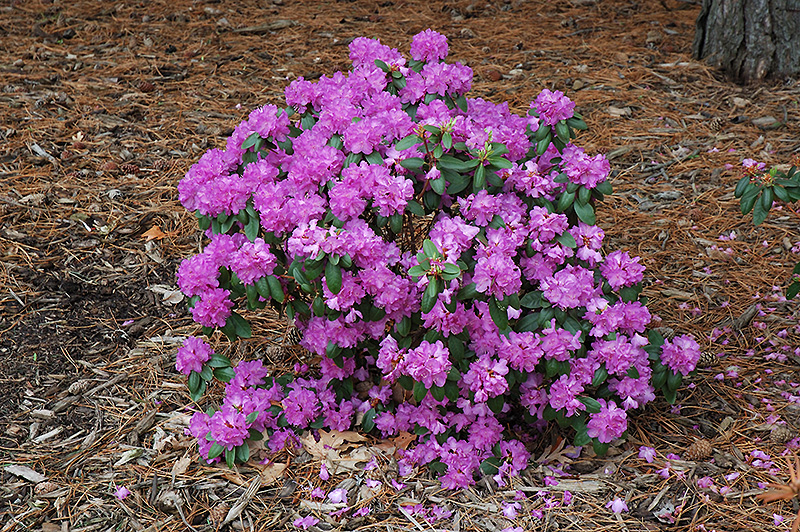

Botanical Name: Rhododendron mucronulatum
Common Name: Korean rhododendron
Family: Ericaceae
Distribution/Origin: Korea, Japan, Northern China
Leaf: elliptic, medium green, sharp pointed tips
Bud: alternate, terminal reproductive buds
Flower: truss, widely funnel shaped, pink to mauve rosy purple
Fruit/Seed: capsule, often aborted/absent
Stem/Bark: brown to orange, slightly flakey
Size: 4-8’ height, 4-8’ spread
Habit: dense
Form: upright, rounded
Soil conditions: acidic, humusy organically rich, well drained
Moisture: medium
Sun: part shade to full shade
Exposure: doesn’t like “wet feet”
Landscape use: specimen, spring interest, hedging, shrub border, mixed border
Notes:
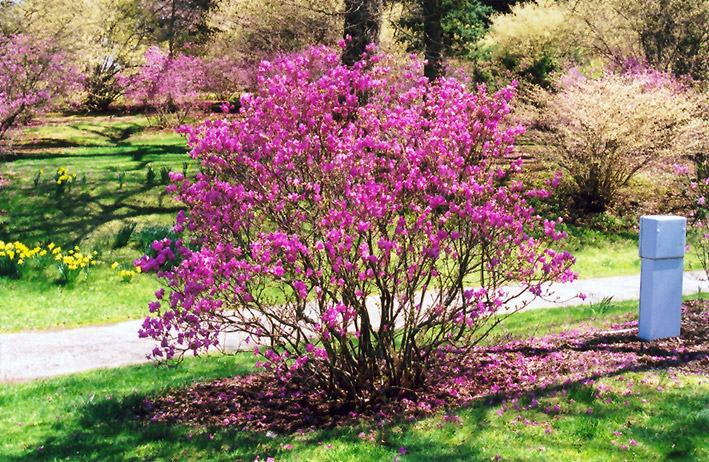

Botanical Name: Scilla siberica
Common Name: Siberian squill
Family: Asparagaceae
Distribution/Origin: central - west Asia, Russia, Turkey
Leaf: simple, soft flexible texture, linear with acute apices and truncate bases, entire margins
Bud: basal
Flower: perfect, racemes of 6 petaled flowers, rotate/stellate corollas, showy blue, blooms April-May
Fruit/Seed: lumpy capsule
Stem/Bark: bulbs
Size: up to 1’ height, 1-2’ spread
Habit: arching
Form: mounded, vase
Soil conditions: fertile, humus rich, well drained
Moisture: average
Sun: full sun
Exposure:
Landscape use: group or mass planting, perennial border, spring interest
Notes: do not overwater
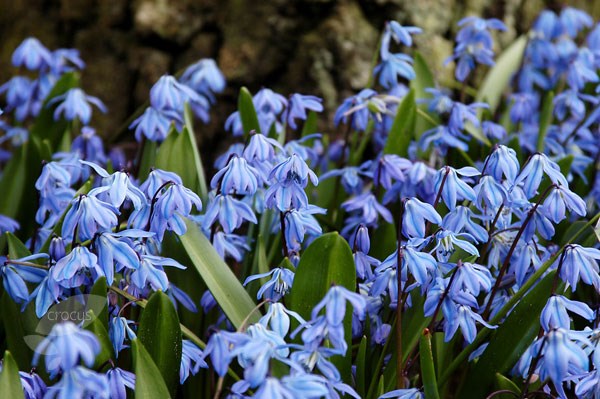

Botanical Name: Symphytum ibericum
Common Name: Iberian comfrey
Family: Boraginaceae
Distribution/Origin: NE Turkey, Causica
Leaf: light green, crenate margins, hairy, ovate with acute to acuminate apices, rugose
Bud: alternate
Flower: racemes, terminal, pale yellow, tubular blooms,
Fruit/Seed: insignificant
Stem/Bark: pubescent reddish stems
Size: up to 24” by 12” spread
Habit: spreading, dense
Form: mounding, mat forming
Soil conditions: average, rich, well drained
Moisture: even regular moisture
Sun: full sun to partial shade
Exposure:
Landscape use: groundcover, weed suppressent, understory planting, beds, borders, slopes/hills
Notes:
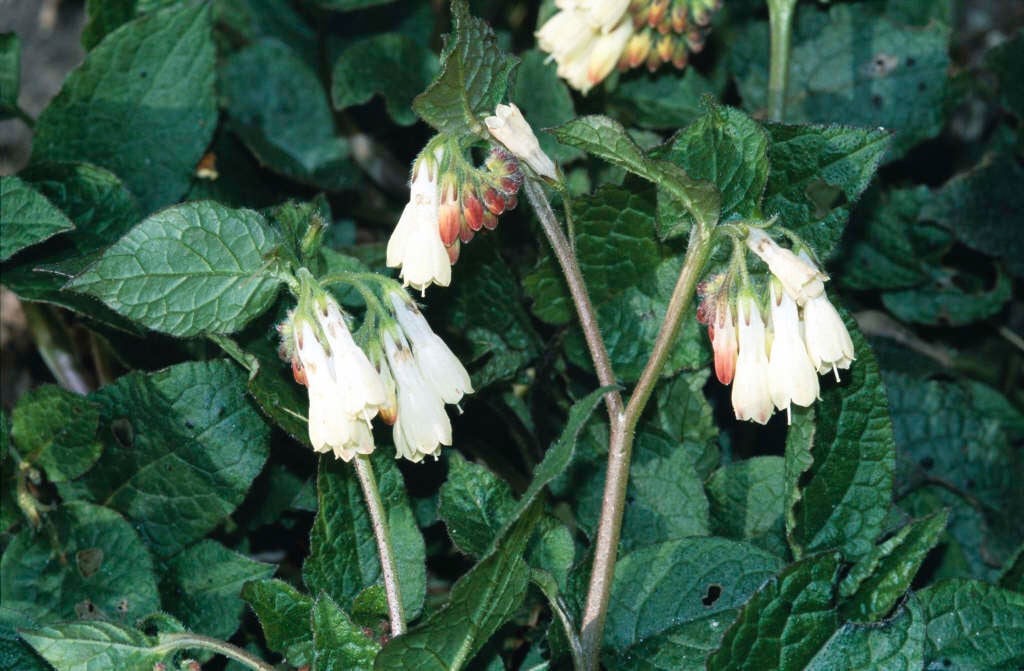

Botanical Name: Trachystemon orientalis
Common Name: early flowering borage
Family: Boraginaceae
Distribution/Origin: southern Europe, SW Asia
Leaf: medium to dark green leaves, coarsely textured, cordate shaped, overlapping
Bud: basal
Flower: loose branched panicles, white throated with bluish blooms, tubular corollas, slightly reflexed petals, compound umbels
Fruit/Seed: achenes
Stem/Bark: rhizomatous, hairy pink tinted stems
Size: 1-1.5’ height, 1.5-2’ spread
Habit: spreading
Form: mat forming, mounding
Soil conditions: humusy, adaptable, well drained
Moisture: moist to dry
Sun: partial shade to full shade
Exposure: tolerant of drought, heavy shade, erosion
Landscape use: groundcover, ornamental, shaded areas, woodland margins, dry shade
Notes:


Botanical Name: Viola x wittrockiana
Common Name: pansy
Family: Violaceae
Distribution/Origin: garden origin
Leaf: elliptic to ovate, rounded apices with obtuse bases, crenate margins, bright green, simple
Bud: alternate
Flower: solitary, 5 petaled, varying colors, blooms Jan-June
Fruit/Seed: brown capsule
Stem/Bark: soft flexible stems, green
Size: up to 1’ height, 1-2’ spread
Habit: stiffly upright
Form: mounded
Soil conditions: acidic, average, well drained
Moisture: moderate
Sun: full sun to partial shade
Exposure: can only handle full sun if soil is kept moist
Landscape use: bedding plant, cut flower/foliage, culinary use, winter interest, baskets/containers
Notes:


No comments:
Post a Comment